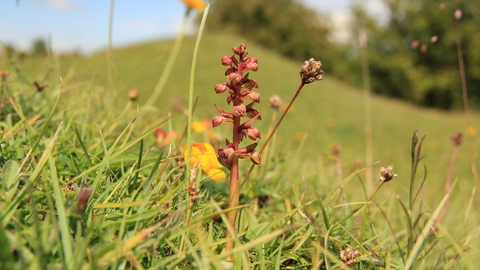
Frog orchid © Kieron Huston
Frog orchid
Scientific name: Dactylorhiza viridis
This unassuming orchid is easily overlooked. It is found patchily across the UK, but has been declining for decades.
Species information
Category
Statistics
Usually up to 15cm, occasionally up to 35cmConservation status
Vulnerable
When to see
Flowering plants best seen June to JulyAbout
Frog orchids can be hard to spot, even in a well-grazed grassland. They're short and more subtly coloured than many of their more familiar relatives. In southern Britain they favour chalk and limestone habitats, such as downlands and quarries. Further north they can be found in a wider variety of grasslands, including machair, hay meadows, and road verges.Frog orchids have shown a long-term decline, particularly in England. The Plant Atlas 2020 described this species as potentially the UK's fastest declining orchid. Declines have been linked to agricultural improvement, undergrazing, and more recently drought.
